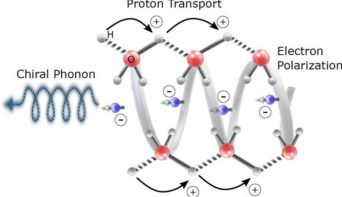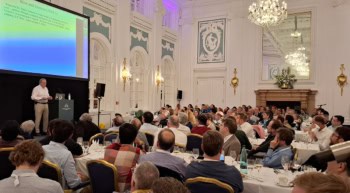
An analogue to the creation of Hawking radiation at the event horizon of a black hole could be made by firing an intense laser pulse at specially designed targets. That’s the conclusion of physicists in Taiwan and France, who say that the “plasma mirror” created in the proposed experiment could be used to study the relationship between quantum particles inside and outside a black hole. The researchers have calculated that the experiment could be done using existing technology and that it could shed important light on the black-hole information-loss paradox.
The idea of Hawking radiation has been around since the 1970s when Stephen Hawking considered what would happen to pairs of “virtual particles” created near the event horizon of a black hole – the region beyond which not even light can escape the tug of gravity. Quantum mechanics dictates that pairs of such particles can pop into and out of existence within a vacuum, and Hawking reasoned that one particle from each pair would be swallowed up by the black hole, while the other would be emitted to form “Hawking radiation”. This process would remove energy from the black hole, making it evaporate and eventually disappear in the absence of any other nearby sources of matter.
Because the emitted radiation is generated at the edge of a black hole, it tells us no more than an external observer can learn about the black hole – its mass, charge and angular momentum. All other information regarding individual objects that have been sucked into the black hole would be lost forever. The problem with this loss of information is that it violates a principle of quantum mechanics that says that the complete information about a physical system at one point in time will dictate its quantum state at any point of time in the future.
Thought experiments
Research into the information-loss paradox has been mostly theoretical as it is hard to make the appropriate measurements on real black holes. Physicists are therefore keen to create systems in the lab that are analogous to black holes, with the Hawking-like radiation associated with these analogues potentially providing important clues to resolving the information paradox.
Now, Pisin Chen of National Taiwan University and Gerard Mourou of Ecole Polytechnique in Paris have proposed a way of using a plasma mirror to create a black-hole-like system. Plasma mirrors are created when an intense pulse of radiation strikes a solid material, such as glass, and separates electrons from the atoms to make a plasma. When this occurs, the material changes from being transparent to being highly reflective.
To mimic Hawking radiation at the event horizon of a black hole, Chen and Mourou propose creating a plasma mirror that accelerates rapidly and then stops abruptly. This, they say, could be done by firing an intense laser pulse at a solid target to create an intense pulse of X-rays. This X-ray pulse would then be directed at a second solid target that has a density varying on the nanometre scale. A plasma would be created in this second target and the density gradient would make the plasma accelerate in the direction of the X-ray pulse.
Imperfect mirror
The plasma acts as an imperfect mirror, reflecting one half of a virtual photon pair created at its surface and allowing the other photon to pass through. These reflected photons are analogous to Hawking radiation. The un-reflected photons become trapped in the plasma and are analogous to photons within a black hole.
According to Chen and Mourou, the trapped photons should be released when the mirror stops as it reaches the end of the second target. The reflected and trapped photons would then be detected and physicists could look for correlations between the photons to determine if the photons are quantum-mechanically entangled. The virtual pairs are entangled when they are created, and a measurement of entanglement between the reflected and trapped photons could provide important information about the information-loss paradox.
Chen and Mourou say it should not only be possible using advanced laser and nanofabrication techniques to do the experiment but also measure correlations between the photons of interest, despite the presence of a large background of other photons created in the experiment.
The research is described in Physical Review Letters.



